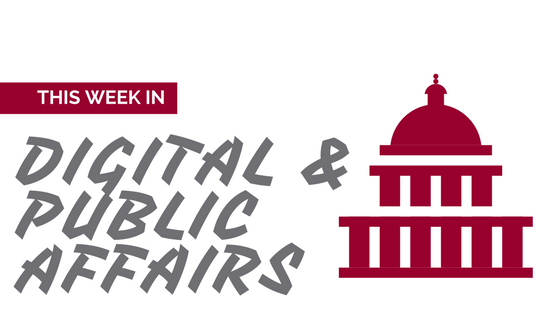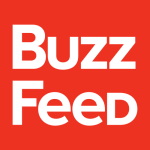 Social media has created a brave new virtual world over the last decade with platforms such as Facebook, Instagram, Twitter, LinkedIn and Snapchat creating communities with hundreds of millions and in some cases, billions of users. Facebook with well over 2 billion users is larger than the world’s most populous countries. These virtual communities created by the social networks have become a powerful way to stay connected with friends, family and thought leaders around the world. According to the Pew Research Center for Information and Technology over 69% of adults use social media networks with the majority of usage occurring on smart phones. As children seek to emulate their parents and acquire smart phones and join social media networks, what can parents do to make sure children are safe, secure and using social media responsibly? As parenting shouldn’t stop as children enter digital communities, here are a few tips and parameters for parents when confronting the issue of social media usage with their kids.
Social media has created a brave new virtual world over the last decade with platforms such as Facebook, Instagram, Twitter, LinkedIn and Snapchat creating communities with hundreds of millions and in some cases, billions of users. Facebook with well over 2 billion users is larger than the world’s most populous countries. These virtual communities created by the social networks have become a powerful way to stay connected with friends, family and thought leaders around the world. According to the Pew Research Center for Information and Technology over 69% of adults use social media networks with the majority of usage occurring on smart phones. As children seek to emulate their parents and acquire smart phones and join social media networks, what can parents do to make sure children are safe, secure and using social media responsibly? As parenting shouldn’t stop as children enter digital communities, here are a few tips and parameters for parents when confronting the issue of social media usage with their kids.
1. Decide a good age for your kids to begin
As a parent you decide when it is appropriate and best for your child to have a smart phone and its no different with social media. Only you know when your child is capable of handling and managing social media accounts. Do not succumb to the pressure of your child’s peer group. Its your decision. Do some research on the platforms and see what may be best for your child. Many platforms have age requirements before you can open an account. For example Facebook, Instagram and Snapchat have an age requirement of 13 to set up an account. It is strongly advised to follow the age requirements for each platform.
2. Talk to your kids about the positives and negatives of social media
Social media has many amazing and wonderful uses for people of all ages, but it also comes with risks and negatives. Make sure to research and learn the negatives and then explain them to your kids in a way they can understand and know what they are getting into. For example, according to the Pew Research Center for Information and Technology, social media is the most common venue for online harassment, with over 41% of adults being harassed online. Over half of young women in the U.S. according to Pew have received explicit images that they did not ask for. In addition there have been multiple studies that have shown that social media use can result in heightened levels of anxiety, jealousy and anti-social behavior among frequent users.
3. Learn and teach your kids about online privacy
One of the biggest risks about all online use, especially social media, is privacy. From reputation to personal information there are many aspects that need to be discussed with your children to protect them. Children should be advised not to interact with people that they do not know online and be aware that there are adults who pose as children online through the use of fake account profiles. They also should never meet in public alone someone that they first met online via social media. Also use social media platform privacy settings and your browser settings to help control and protect your child’s online activity. Also it is highly recommended that you use parental control software to monitor you child’s online usage on all relative devices in your family household such as desktop, mobile and tablet.
4. Monitor and regulate usage
It is important to make sure your child isn’t spending too much time or engaging in inappropriate activity on social media. Limiting usage to a home computer that is central in the home so usage can be observed is a good idea. Also limiting time spent browsing social media is an important measure, as over usage can quickly become addictive. Setting time parameters with you children is critical. With online monitoring software, you can see what content your child is viewing and set as off-limits certain types of sites. You can also monitor how much time they are spending online. Many internet providers, are now allowing you to have the easy capability of turning off the internet for certain users in your home as well as placing time limits for usage.
5. Keep up with the latest trends in social media
As a parent it is always important to stay up to date with the latest trends in social media and learn about the new platforms that are experiencing fast adoption rates among children and teens. It is important to “know what the kids are dancing to these days” online. That means keeping up with changes and updates to the social media platforms that you know your kids are using, and learn about ones that they may soon ask to sign up for. Make sure you know all the ins and outs of these platforms and how they are being used by young people. If your kids are on a platforms such as Instagram and Snapchat – you should be too. Know how to use the many technologies that they have access to.
These are some basic tips to help parents with the seemingly overwhelming world of social media. If regulated, monitored, and used properly social media can be a great and fun tool for the whole family. Who doesn’t enjoy sharing funny, moving, timely or informative content with family members – such as breaking news events announced on Facebook or Twitter or a funny video from YouTube? So when it comes to social media, just make sure you and your children are on the same page. Your love, guidance and support for your kids doesn’t stop at the shore once they enter the digital ocean of social media.
Interested in learning more about this topic? Contact us here for information on our social media parenting seminars for schools, PTAs, churches and neighborhood groups.



 Digital and social media are transforming how government institutions, political campaigns and trade associations are communicating and marketing to their key audiences.
Digital and social media are transforming how government institutions, political campaigns and trade associations are communicating and marketing to their key audiences. Digital and social media are transforming how government institutions, political campaigns and trade associations are communicating and marketing to their key audiences.
Digital and social media are transforming how government institutions, political campaigns and trade associations are communicating and marketing to their key audiences.
